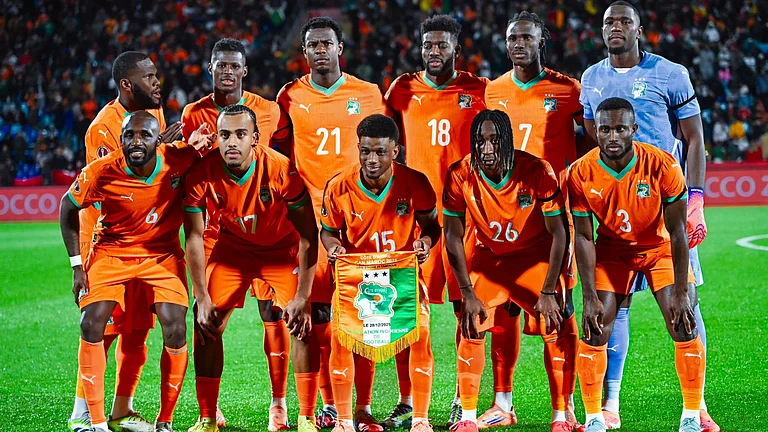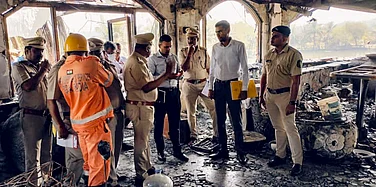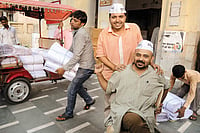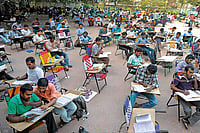Till January, Avinash Chander was chief of the Defence Research & Development Organisation (DRDO). The senior boffin and architect of India’s missile programme, who was unceremoniously ‘sacked’ barely a fortnight before the launch of Agni 5, says he has no clue why he was shown the door a few months before retirement. In this interview with Pavithra S. Rangan, he says he was not taken into confidence before he was replaced. Also that he had had no differences of opinion with the government. He talks of how the DRDO had nurtured a thousand industrial partnerships. Even so, he says, Indian industry has been reluctant to venture into making ‘end-products’. He says he is all for FDI and the participation of private enterprise in defence production, while warning against the pitfall of “assemble in India” as opposed to ‘Make in India’.
Did the ‘sacking’ come as a surprise?
Yes, the termination came as a big surprise.
Did the Defence Minister Manohar Parrikar or his predecessor take you into confidence?
No, there was no discussion on this issue; nor was there any discussion regarding any changes in DRDO.
The Government gave the impression that it was unhappy with the progress of different projects in the DRDO. Was this the immediate trigger?
Unhappiness or dissatisfaction with DRDO is often based on past perceptions of a few projects like Arjun, LCA etc. In recent years there has been great improvement in time schedules as well as product profile. This is often ignored. Also, the delays are often a combination of over optimistic time frames, extended test durations, inappropriate priority to indigenous systems and production process. These issues require changes at multiple levels, inside as well as outside DRDDO. Usually we get only lip service for self reliance. I do not think this could be the reason.
Were you seen as a stumbling block to something the government was keen at?
There was never a conflict of opinion. I strongly feel that many initiatives like ‘Make in India’ will strengthen both Indian industry as well as defence research. These initiatives are in consonance with what DRDO stands for.
How do you react to the Government’s stand that the organisation must be manned by younger leaders?
Success of any organisation needs both experience and enterprise; what is important is a certain level of consistency of decision-taking and policy by the government. Also, a transparency of processes.
Are you suggesting that the NDA has moved away from the UPA’s stated positions?
The government has employed persons of similar age for similar posts on contract. This appointment was for a fixed tenure. Although termination is the prerogative of government, they should have intimated the reason.
The Government appears to be aggressively pursuing FDI in defence production. Will this cut down cost, help in import substitution or in transfer of technology?
FDI in defence is very welcome. DRDDO has always supported the need. This will encourage the growth & expansion of manufacturing sector at the same time bringing in soft skills of programme management, quality processes and product engineering. It will also provide linkages for access to technologies and open up the export potential.
What are the pros and cons in involving the private sector in defence production?
Participation of the private sector in defence is long overdue. DRDDO has nurtured more than 1000 industry partnerships at various levels. However, we have always found it difficult to involve them for manufacturing the end product. We welcome the new initiative, it will definitely make production easier.
However, we have to ensure that India does not fall into the trap of easy money making through ‘Assemble in India’ rather than ‘Make in India’. The issues regarding IP rights need to be addressed. I feel that there is a need to formally identify a Defence Industrial Complex comprising of Tier1 and Tier 2 industries which can then operate in a cooperation-cum-competition basis. Defence programmes should be able to access these industries to speed up the process.
What real changes do you see with the change in the government?
It is encouraging. For the first time orders are being floated to Indian companies. Procedures are being simplified to ease the process.
In one of your rare public statements you had explained your difficulties in filling up vacancies in DRDO. Is that because of the service conditions offered or due to the shortage of scientific manpower in the country?
DRDDO has been inducting 60 to 70 scientists every year from premier institutions. The intake is constrained by stagnation in the sanctioned manpower. However a sustained negative criticism, ill-founded or motivated, does drive away many potential aspirants.
General (retd) V.K Singh’s 2012 leaked letter revealed India’s unpreparedness for war, due to old and obsolete combat and support arms. What is DRDO’s contribution to defence modernisation?
Apart from success in strategic areas, DRDO has developed surface to surface missiles, surface to air missiles, air to air missiles etc. In the last one year a special emphasis on ammunition and arms has resulted in the operational readiness of BMCS ammunition for 155mm artillery gun, hand grenades, smoke grenades, protective carbines, corner shot rifles, influence mines. FSAPDS for Arjun and T90 tanks is nearly ready for benchmarking with imported systems. An Indian artillery gun 155/52 of world class capability is getting ready.
DRDDO has delivered radars, sonars, decoys and many other systems. Today about 30 systems are at various stages of test and acceptance, we have launched several new projects to meet the Armed forces requirements.
Will the private defence industry be comfortable with transfer of technology?
Indian industry has very limited experience in defence sector. The need for collaborations is therefore imperative to achieve the technological maturity as well as manufacturing skills necessary for reliable systems and a competitive capability. But it will require special efforts from Indian enterprises to ensure absorption and competitive indigenous build up over this.
Will co-production agreements between India and foreign countries be viable?
India has the ideal mix of a good technology base, an established feeder mechanism of skilled manpower through PSU's, a huge technical manpower pool and an excellent diaspora. These together provide an ideal platform for Indian defence industry to serve not only Indian needs but to build an export potential as well.
Does being the world’s largest arms importer make India vulnerable?
The imports make us effective in the short term but highly vulnerable in the long term, compromising the ability to fight a sustained war. Dependence on spare parts, obsolescence, drying up of supply chains, political costs, second grade equipment are some of the well known issues. It may be worthwhile to examine the difference between promised and achieved performance of many imported systems. Serviceability and maintenance status often hamper the availability and performance.
A shorter, edited version of this appears in print


























